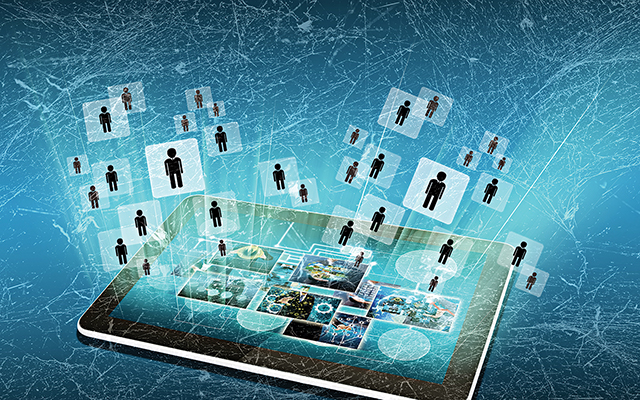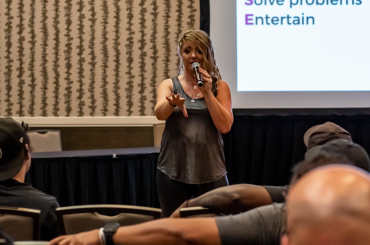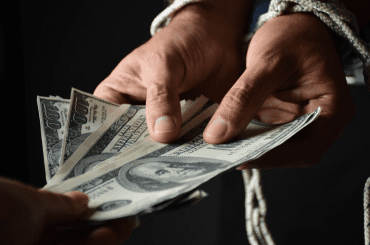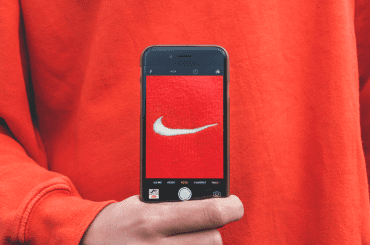For the DJ industry, Facebook and Twitter are the preferred social media channels—at least until someone figures out that brides are on Snapchat.
But many DJs have been using LinkedIn—especially now that its targeted paid advertising component can return specific inquiries, by location, title and position. It’s more expensive than Facebook ads, but it’s also more targeted, and it’s a great way to meet event planners at corporations, as well as catering executives, most of whom are always looking on the network—very often for their next job.
Tactics on LinkedIn vary in sophistication. Many people just blast requests without knowing who it is they’re making the request with. In a services industry like DJing, it’s important that the connection knows precisely who you are, what you do, and what your values are.
Here are some LinkedIn tactics—from the simple to the sublime—that can help you make those connections less elusive:
#1. Before attending conferences—say, for catering execs—use LinkedIn to search people involved with the conference and check out their profile. LinkedIn will send them an email notification that you’ve seen their profile; this makes a connecting at a show more familiar.
#2. Cross promote on LinkedIn from your company blog. This is a great way to connect with people outside of your network. As long as you follow tips #3 thru #5.
#3. Publish articles that are educational, not promotional. Use a strong headline, with a compelling, clear picture.
#4. Post the article, which first appears as a status update so your 1st-degree connections see it.
#5. Over the next few days, post the article in various LinkedIn groups you’re in. To capture that specific audience’s attention, give your post an introduction that relates specifically to the subject matter of interest to the group. By posting in groups, people beyond your 1st-degree connections will see it and learn about you and your services. Many people who use LinkedIn have had people “follow” them and reach out to them about their services as a result of articles they’ve posted.
#6. Join groups that your customers (or prospective customers) are members of. Then, make it a point to share content that is helpful and educational, not sales-y or self-promotional. Place a link to your website, as you’ll want to drive traffic there and convert your LinkedIn contacts into leads for your business.
#7. Don’t make the mistake so many people make: joining groups that are comprised of your peers. While this is useful for professional growth and career development, it’s less helpful when it comes to marketing your business because these audiences are often competitors and not prospective customers.
#8. If a LinkedIn paid, targeted campaign is too pricey, search terms that are relevant—”corporate events,” for example. When you find a director-level connection that would benefit from knowing about your DJ service, personalize a link request explaining your service and the value to them.
#9. Personalize a request to connect. Most people just connect without really knowing who they’re connecting with. But it’s much more effective to remind that potential connection who you are, why you want to connect and how you add value. At the very least, remind them who you are so they know you’re not just adding contacts en masse. That way, they’re not left wondering who you are or, worse, questioning your motives.
#10. People who are successful with LinkedIn always know something about a potential connection before they make the request. Read their content, check out their website, listen to their podcast. Use some of the poignant facts you learn in the initial contact message or InMail. The recipient is usually more open to connecting with someone who has done their research.
#11. When people “like” or comment on your posts, visit their profile and explore who within their network would be good to network with. If the mutual relationship is strong, request a
virtual introduction—they work well.
#12. Become familiar with the LinkedIn InMail feature. It allows you to send a message to anyone, even if you are not connected to them. For a fee you get a certain amount of InMails and if you don’t get a response you receive a credit.
#13. The day after any networking event, input the names from all business cards you’ve collected into LinkedIn. Don’t send a generic connection request. Rather, thank them for attending the event and make the suggestion that you stay connected.
#14. Use LinkedIn’s mobile app Connected to alert you of birthdays, job changes, and work anniversaries. Do requisite congratulations to keep yourself top of mind.
#15. Develop targeted keyword phrases that reflect your brand, business goals, and target audience. Tag your profile with keyword phrases (“corporate event coordinator,” for example). When a new prospect inquires about your services, and they tell you they found you on LinkedIn, it is often because their search returned your profile.
#16. As far as connections, more is definitely not merrier. What’s the point of having 500-plus connections if you don’t truly connect with them? You should have business relationships with all of them. At every event, you should personally LinkedIn with the bride and groom, stay top of mind in a professional networking setting, to help your chances of repeat business.








